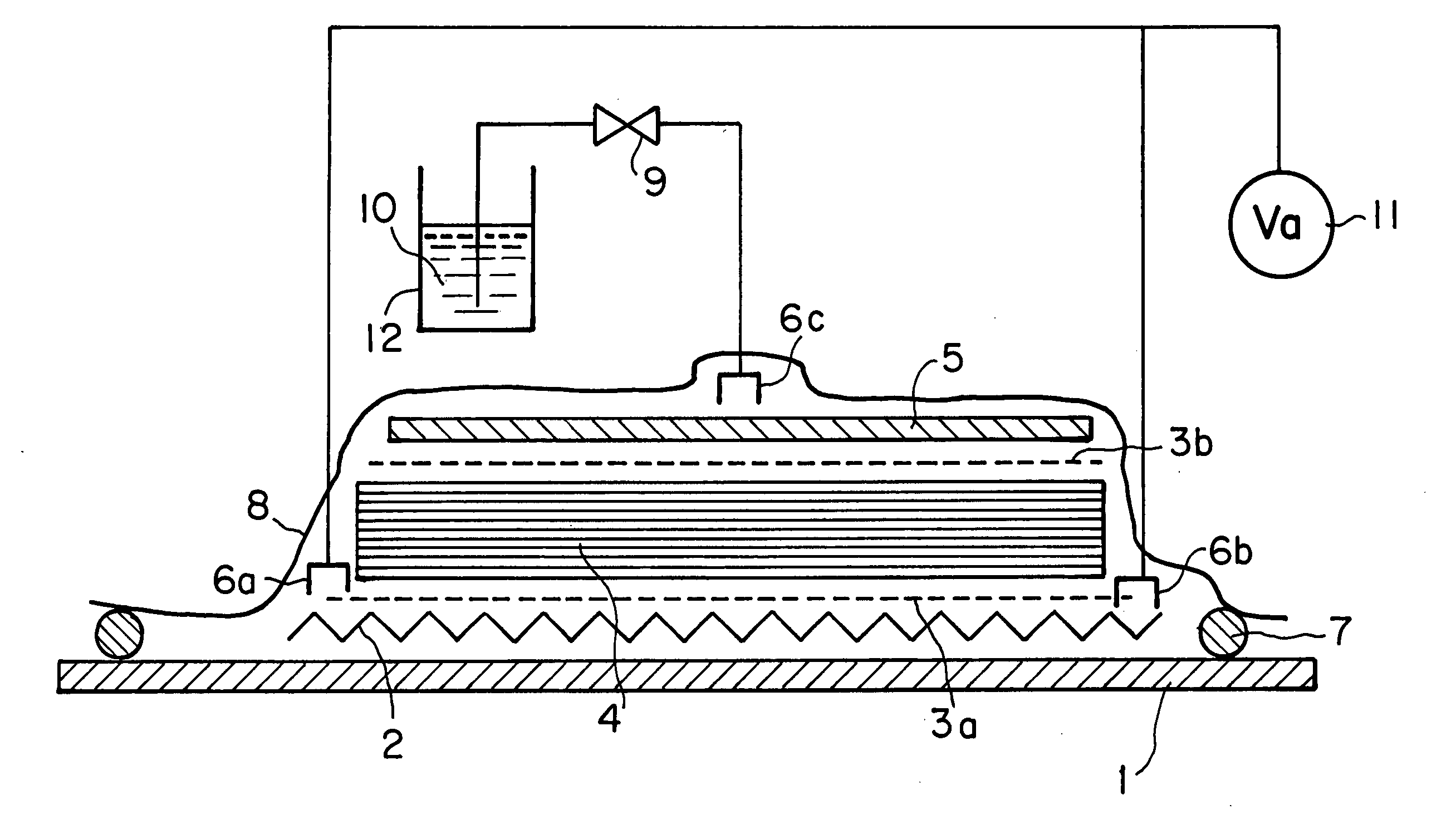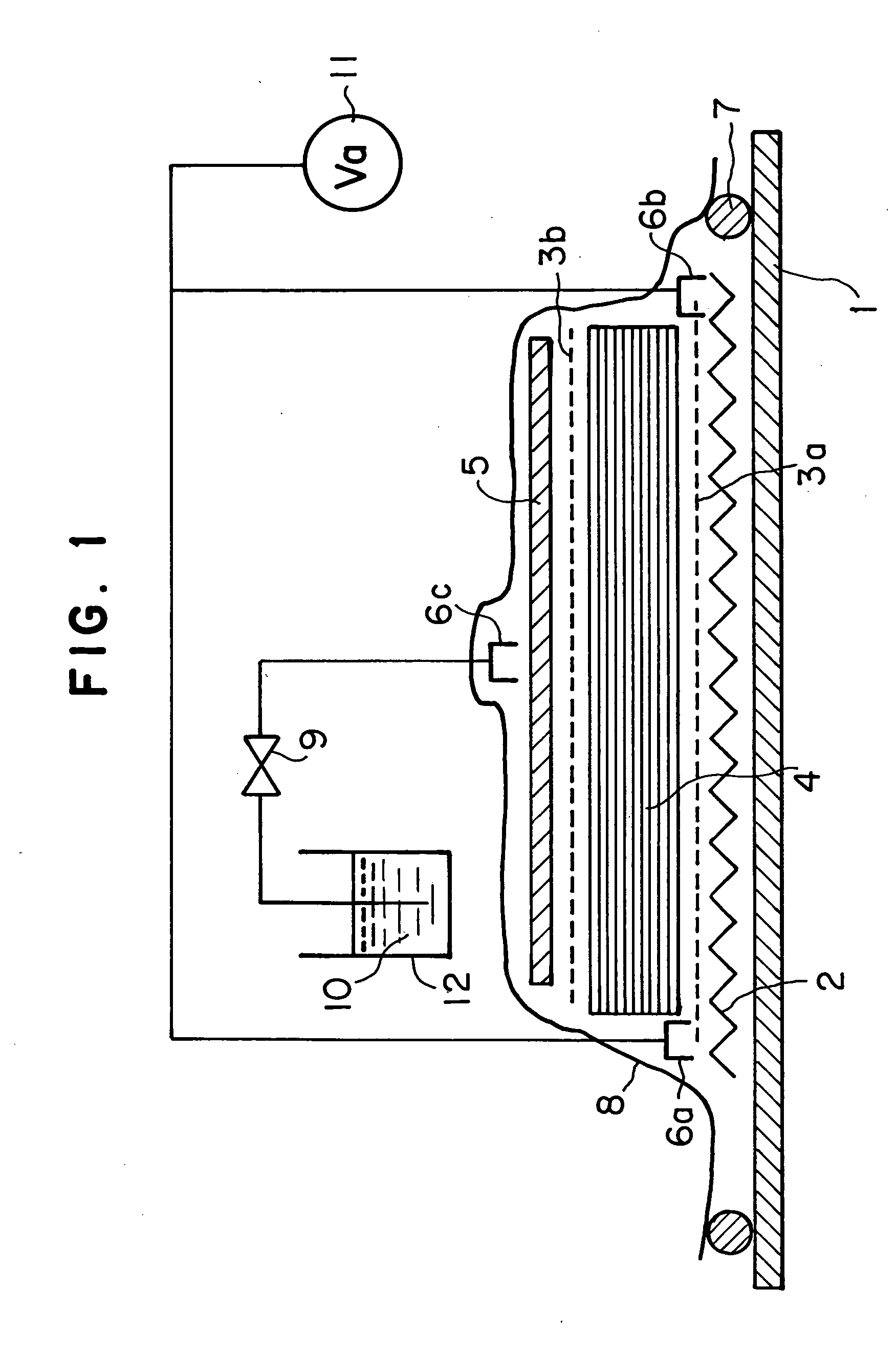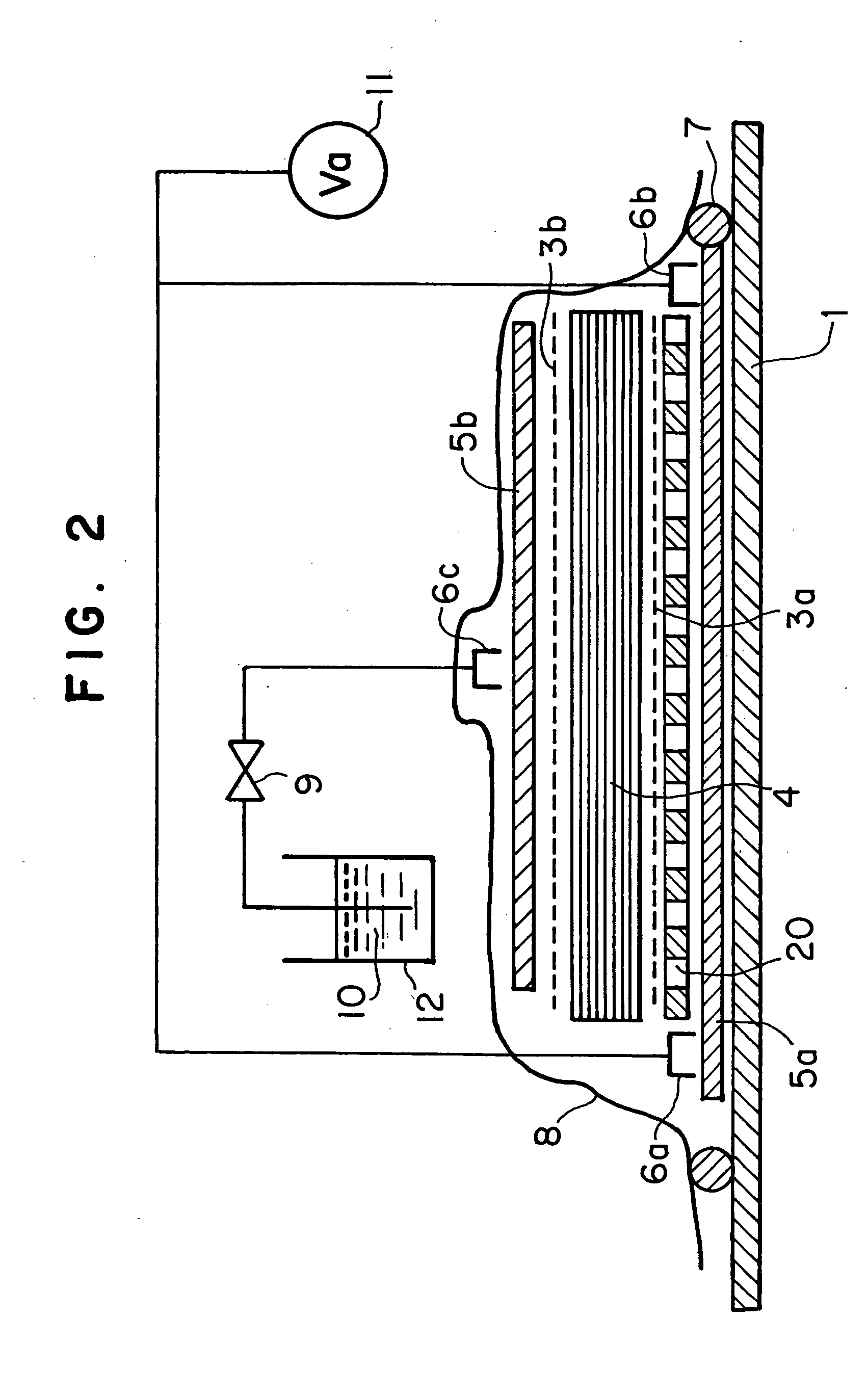Method of rtm molding
a molding method and rtm technology, applied in the direction of lamination, lamination apparatus, chemical equipment and processes, etc., can solve the problems of difficult to push out voids in the side directions, limit the distance in which the thickness direction of the substrate can be impregnated, and the inability to predetermined impregnation, etc., to achieve good resin impregnation properties, improve surface quality, and increase the effect of lightweight properties
- Summary
- Abstract
- Description
- Claims
- Application Information
AI Technical Summary
Benefits of technology
Problems solved by technology
Method used
Image
Examples
example 1
[0150] In the molding apparatus for RTM shown in FIG. 1, breather 2 (glass fiber surface mat, weight: 80 g / m2) was placed on the molding surface of mold 1, evacuation gates 6a, 6b were disposed at both end portions, and vacuum pump was connected. Peel ply 3a was disposed on breather 2, and thereon, reinforcing fiber substrate 4 comprising carbon fiber woven fabrics (produced by Toray Industries, Inc., plain weave fabric CO6343 using carbon fibers T300, weight: 200 g / m2) laminated by 120 plies was disposed. At that time, although peel ply 3a between breather 2 and reinforcing fiber substrate 4 may be omitted, this structure is allowed at a premise that the breather is left in a product after molding, and in such a case, a carbon fiber mesh woven fabric is desirable as the breather.
[0151] Peel ply 3b was disposed on reinforcing fiber substrate 4, thereon resin distribution medium 5 of a polypropylene mesh material (produced by Tokyo Polymer Corporation, “Netron”TSX-400P) was disposed...
example 2
[0152] In the molding apparatus for RTM shown in FIG. 2, on the molding surface of mold 1, medium 5a of a polypropylene mesh material (produced by Tokyo Polymer Corporation, “Netron”TSX-400P) was disposed, and on the circumferential portion thereof, evacuation gates 6a, 6b were placed, and they were connected to vacuum pump 11. Porous sheet 20 (stainless steel punching metal with a thickness of 0.2 mm, in which holes each having a diameter of 1 mm were processed at a pitch of 10 mm) was disposed on the medium 5a, thereon peel ply 3a was disposed, and thereon, reinforcing fiber substrate 4 comprising carbon fiber woven fabrics (produced by Toray Industries, Inc., plain weave fabric CO6343 using carbon fibers T300, weight: 200 g / m2) laminated by 120 plies was disposed.
[0153] Peel ply 3b was disposed on reinforcing fiber substrate 4, thereon medium 5b was disposed, and thereon resin injection port 6c was disposed and it was connected to resin pot 12 via valve 9 as a resin injection ga...
example 3
[0154] In the molding apparatus for RTM shown in FIG. 3, using the mold processed with #-type grooves 30 for resin distribution (a groove having a rectangular cross section with a width of 1 mm and a depth 3 mm and the pitch of the grooves is 8 mm), resin pot 12 was connected to the grooves via valve 9. Porous sheet 20 (stainless steel punching metal with a thickness of 0.2 mm, in which holes each having a diameter of 1 mm were processed at a pitch of 10 mm) was disposed on the molding surface, thereon peel ply 3a was disposed, and thereon, reinforcing fiber substrate 4 comprising carbon fiber woven fabrics (produced by Toray Industries, Inc., plain weave fabric CO6343 using carbon fibers T300, weight: 200 g / m2) laminated by 120 plies was disposed. Peel ply 3b was disposed on reinforcing fiber substrate 4, thereon medium 5 of a polypropylene mesh material (produced by Tokyo Polymer Corporation, “Netron”TSX-400P) was disposed, and thereon, evacuation gate 6 was placed and it was conn...
PUM
| Property | Measurement | Unit |
|---|---|---|
| length | aaaaa | aaaaa |
| viscosity | aaaaa | aaaaa |
| thickness | aaaaa | aaaaa |
Abstract
Description
Claims
Application Information
 Login to View More
Login to View More - R&D
- Intellectual Property
- Life Sciences
- Materials
- Tech Scout
- Unparalleled Data Quality
- Higher Quality Content
- 60% Fewer Hallucinations
Browse by: Latest US Patents, China's latest patents, Technical Efficacy Thesaurus, Application Domain, Technology Topic, Popular Technical Reports.
© 2025 PatSnap. All rights reserved.Legal|Privacy policy|Modern Slavery Act Transparency Statement|Sitemap|About US| Contact US: help@patsnap.com



